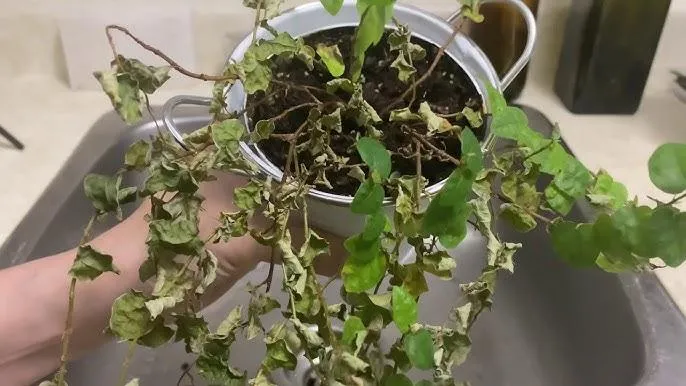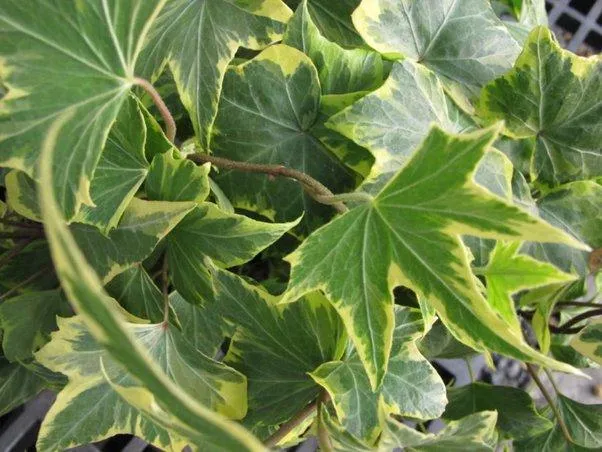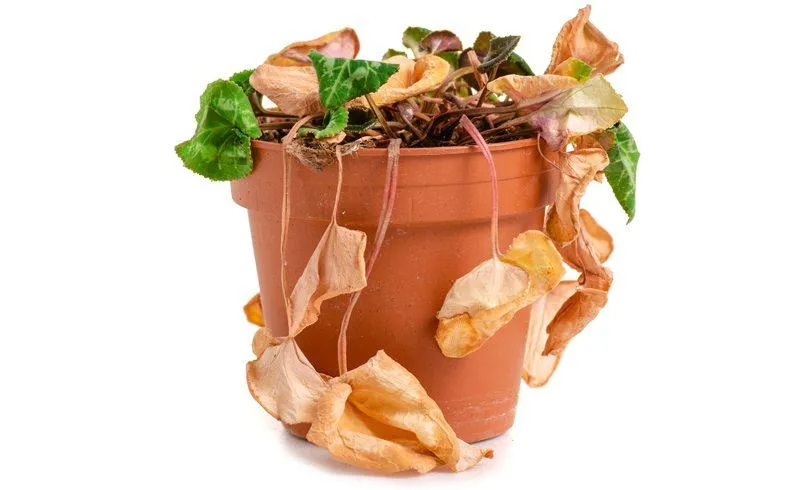11 Steps to Revive Your Dying Ivy Plant
An ivy plant is a popular houseplant that can liven up any indoor space with its lush evergreen foliage. However, keeping an ivy plant healthy long-term takes some care and knowledge. From my experience as an avid gardener, ivy plants are prone to dry out or get pests if not properly maintained.
If your ivy plant is looking a bit droopy or sad lately, don’t panic. With the right TLC, there’s still hope to revive it. In this article, I’ll outline 11 essential steps to save a dying ivy plant based on horticultural best practices. By following these tips, you can nurse your ivy back to thriving life.
1. Check the Soil Moisture
Most likely, the number one reason an ivy plant starts declining is lack of water. Ivy plants like consistently moist soil. Stick your finger an inch into the soil and if it’s dry, it’s time for a good watering. Water until the excess runs out the drainage holes. As a rule of thumb, water whenever the top inch of soil is dry. Keeping the soil moist is crucial for plant health.
2. Provide Bright, Indirect Light
Ivy plants need moderate to bright light to photosynthesize properly. If yours has been deprived of sufficient light lately, it will struggle. Move the plant to a spot with both morning sun and shade from the hot afternoon rays. An east or west-facing window is ideal. Too much direct sun can scorch the leaves, so watch it doesn’t get fried.
3. Prune Back Damaged Leaves
Take scissors or pruning shears and cut off any shriveled, yellowed, or dead leaves to remove decaying organic matter that can harbor disease and pests. This lets the plant focus its energy on new growth. Be sure to sterilize your tools between prunings to avoid spreading infection. Removing damaged foliage helps the ivy look perkier.

4. Check for Pests
Take a closer look at your ivy’s leaves, stems, and soil. Common pests like spider mites, scales, and mealybugs can weaken a plant. Look for tiny insects, webbing, or fuzzy spots. If you spot pests, isolate the plant and treat with a insecticidal soap or neem oil. Repeatedly rinsing the leaves with water can help dislodge some pests too. Getting infestations under control is important for recovery.
5. Fertilize in Growing Season
During spring and summer when actively growing, ivy plants benefit from a diluted liquid fertilizer every couple weeks. This provides essential nutrients for lush new growth. I like using a general purpose houseplant formula around half the recommended strength. Too much fertilizer can further stress an ailing plant. Proper feeding nourishes foliage without burning the roots.
6. Check the Drainage
Soggy, sour soil from poor drainage is a quick way to kill off a plant. Make sure your ivy’s pot has holes in the bottom for excess water to escape. Elevate the pot if sitting directly on soil or other surface. You can also use pebbles or shards beneath for added aeration. Good air circulation in the soil is important for root health.
7. Repot if Needed
An overcrowded root system can inhibit a plant from thriving. Check if roots are crammed against the pot sides or growing in a tight circle. It may be time for a repotting into a slightly larger container using fresh potting mix. Be gentle not to damage fragile roots. The larger volume allows for growth while providing aeration.
8. Increase Humidity
Ivy plants originate from tropical rainforests and prefer humid conditions indoors. Sitting the pot on a pebble-filled tray of water ups the humidity around it without overwatering the soil. You can also use a humidifer or group plants together. Low indoor humidity causes leaf edges to brown, so boosting it aids recovery.

9. Acclimate to Changes Gradually
If the ivy was thriving in one spot but is now struggling, assess any recent changes like light, temperature, or watering amount that may have shocked the plant. Make modifications incrementally to avoid further stress. For example, increase sun exposure a few hours daily instead of all at once. Gradual adjustments help plants adapt stress-free.
10. Try Foliar Feeding
As a last resort, apply a diluted liquid fertilizer or compost tea directly to the leaves with a spray bottle. This “foliar feeding” puts nutrients into the plant quickly through absorption. Just don’t overdo it or you risk burning. A little on the green parts perks up foliage pronto for a plant on its last legs.
11. Remove and Replace if Necessary
While diligent care can save many declining plants, sometimes it’s simply too late to revive one that’s too far gone. Monitor your ivy closely – if all lower leaves have dropped and it looks barely clinging to life despite your best efforts, it may be kindest to discard it and start over with a new healthy specimen. Replacing it allows for a fresh start.
With some TLC following these steps, you have good hopes of bringing a dying ivy plant back from the brink. Be patient, as recovery takes time. Keep conditions favorable and the plant should start putting out new growth within a few weeks. Proper care means ivy plants can thrive indoors for many years to come. Never give up on a plant too soon! With these tips, you can be an ivy whisperer.
Saving a Dying Ivy Plant
| Step | Action | Reason |
|---|---|---|
| 1 | Remove from direct sunlight | Sun can further dry out leaves and stem |
| 2 | water thoroughly but allow to drain | Rehydrates plant but prevents root rot |
| 3 | Trim back any dead or dying leaves/stems | Redirects plant energy to healthy parts |
| 4 | Fertilize weekly at 1/2 strength | Provides nutrients as plant recovers |
| 5 | Place in partial shade and monitor soil | Gives plant rest while checking for improvements |
FAQ
-
My ivy is looking unhealthy and drooping. What’s wrong with it?
There are a bunch of different stuff that can go bad with ivy plants. Mostly it’s because they aren’t getting enough water, light, or nutrients. Check the soil and make sure it isn’t bone dry. Ivy plants also don’t like too much sunshine, so maybe it’s in a spot that’s sort of too bright.

-
The leaves on my ivy are yellowing and falling off. Can I save it?
It’s possible to save an ivy even if the leaves are starting to yellow and drop. Basically, the plant is stressed and needs some TLC. Cut off any leaves or stems that are already yellow or brown. Then, water the soil well and move the plant to a spot with less direct sun if it’s in a bright area. It may take a while, but new leaves should grow back if the plant gets what it needs now.
-
How often should I water a dying ivy plant?
When an ivy plant is struggling, you’ll wanna water it more than usual. A good rule of thumb is to check the soil every day and water it if the top inch is dry. Ivy plants like to stay moist, but not soggy wet. You can water it until water drains out the bottom holes. Just be careful not to overwater it – that can cause root rot issues. the key is to give it enough water to perk back up without drowning the poor thing!
-
What kind of plant food or fertilizer can help save a sick ivy?
Using a general houseplant fertilizer can supply the nutrients to help a weak ivy recover. Look for one that is labeled for foliage plants and use it at 1/2 or 1/4 of the strength listed on the package. You’ll want to fertilize every few weeks during the growing season. Products like fish emulsion or compost tea are natural options. But does an ivy really need fertilizer, or is good soil and water enough? Who knows – I’m no plant expert!
-
My ivy looks pretty awful. Is it a lost cause?
It ain’t over till it’s over! Don’t give up on that ivy just yet. Sometimes plants can bounce back from looking totally hopeless. Cut off any seriously ugly or mushy parts, repot it with fresh soil if needed, and go at it with the TLC. Keep the soil moist and give it INDIRECT light. Within a few weeks, new growth could start coming in. If it’s putting out new leaves, it still has some fight left in it. You never know – some plants can take a real pounding and pull through!
-
How long does it take to see results when trying to save a dying ivy?
It really varies based on how bad off the plant was to start with. But most of the time, you’ll start noticing little signs of improvement within a few weeks if the ivy is responding well to the care it’s getting. New growth or leaf buds popping up is a good sign. Give it at least a month beforegiving up hope. Ivy plants are surprisingly sturdy, so don’t count it out too soon. Be patient – healing takes time! The results won’t happen overnight. Stick with the care and see what happens.

-
What can I do differently next time to keep an ivy healthy?
When nursing a sick ivy back to health, it’s also a good idea to figure out what went wrong before so you don’t repeat mistakes. Was it underwatered and dried out? Give it drinks more regularly in the future. Too much sun? Keep it in partial shade or rotate where it sits. Not enough nutrients? Fertilize itoccasionally. Pay attention to the signs of stress like yellow leaves. With the right growing conditions – bright light but not harsh sun, consistent moisturewithout soggy soil, nutrients as needed – ivy plants can thrive! You’ve got this.
